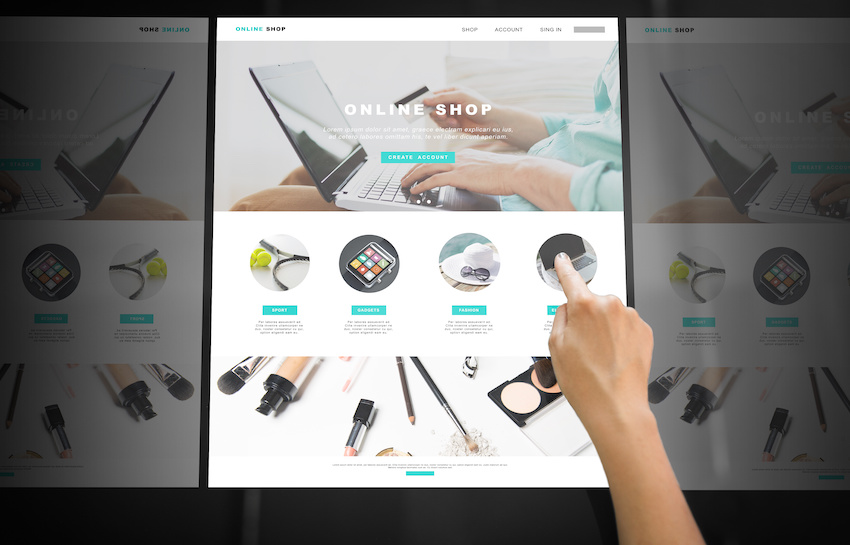The Pros and Cons of the Dropshipping Business Model and How to Start a Dropshipping Store Without Being Tech-Savvy
Are you thinking of starting your own business? The dropshipping business model might have caught your attention. But is it the right choice for you? And do you need to be tech-savvy for your business venture to be successful with this type of business model?
In this article, we explore the pros and cons of the dropshipping business model, giving you the information you need to make an informed decision, whether you have a little knowledge or are already an expert in the field of technology.
What is dropshipping?
Dropshipping is a business model where you sell products without having to carry any inventory. Instead, you partner with a supplier who stocks and ships the products directly to your customers. When a customer purchases from your store, your remote supplier fulfills the order for you.
In other words, you act as a middleman between the supplier and the customer without ever having to handle any physical inventory. Your main focus would be on marketing, building relationships with customers, and providing exceptional service.
The beauty of this business model is its simplicity and flexibility. You have the freedom to offer any product you want, establish your own pricing, and market your brand as you see fit. Furthermore, because you don’t have to invest in inventory up front, it’s a low-risk business strategy that allows you to easily test multiple product concepts and niches.
However, like any entrepreneurial endeavor, the dropshipping business model comes with its own set of challenges. It requires careful research and selection of reliable suppliers, effective marketing strategies to stand out in a competitive market, and excellent customer service skills to build trust with your customers.
Before venturing into dropshipping, evaluate if this business model aligns with your entrepreneurial strengths, especially if you’re not tech-savvy. Are you committed to learning the essentials of product research, digital marketing campaigns, and customer management? Do you have the adaptability to keep up with rapidly changing market trends and consumer demands? Being less familiar with technology shouldn’t deter you, but it will require an added commitment to learning and adapting.
Remember that success in dropshipping relies on perseverance and continuous learning. With dedication and strategic decision-making, this business model can offer great potential for financial independence and personal fulfillment.
Pros of the Dropshipping Business Model
Dropshipping has grown in popularity among businesses, particularly solo entrepreneurs, and it’s easy to understand why. This business model has various advantages that can substantially benefit anyone wishing to establish their own online venture.
Low start-up costs
One of the most significant advantages of dropshipping is that no inventory is required. You will not be responsible for storing, packaging, or shipping items yourself. It translates to lower initial investments and less hassle for you as a business owner. This allows you to avoid the financial risk of buying large quantities of stock that may or may not sell. You can also readily scale your business at any moment without having to worry about running out of storage space or employing more employees.
Easy to start
To start your online venture with the dropshipping business model, all you need is a laptop and an internet connection. Your supplier handles all the nitty-gritty of inventory management and order fulfillment. This frees up your time and resources, enabling you to focus on what you do best: managing your online store and selling your supplier’s line-up of products. This makes it an appealing alternative for people who are new to business or seeking a side hustle.
Wide product selection
With the dropshipping business model, you have access to a wide range of items from suppliers all around the world. You can sell a huge variety of products to your customers because you don’t have to pre-purchase inventory. You can easily and quickly add new product items to your store. This flexibility enables you to respond to shifting market trends and customer preferences, increasing your chances of success.

Location independence
Dropshipping is a business model that is not geographically constrained and is independent of location. You can manage your business from anywhere in the world, as long as you have an internet connection. This means you can travel while working or choose to work from home or a coffee shop because you are not tied to a specific location, giving you the flexibility and lifestyle freedom that many seasoned businesses or would-be entrepreneurs desire.
Easy to test and validate products
Dropshipping allows you to quickly test and validate various market products. You can easily launch new products and assess if they’re profitable because you don’t have to invest substantially in inventory up front. If a product does not sell well, you can easily remove it from your store and not lose any money. This capacity to experiment and pivot quickly gives you a competitive advantage because it allows you to swiftly test multiple items to see which ones appeal best to your target customers.
Cons of the Dropshipping Business Model
While the dropshipping business model has the attractiveness of inexpensive startup costs and the convenience of not having to keep inventory, it is not without problems. In this section, we look at some of the constraints and obstacles that you can face when running a dropshipping business.
Limited control over shipping and fulfillment
As a dropshipper, you rely on your suppliers for inventory and order fulfillment. This means you don’t have complete control over the process. Shipping delays and product quality issues can arise, affecting customer satisfaction and your reputation. It’s crucial to choose reliable suppliers and establish clear communication channels to minimize these risks. However, it’s important to remember that even with the best suppliers, occasional issues may still occur.
High competition
With low barriers to entry, many entrepreneurs are attracted to this model, with thousands of competitors vying for the same customers, resulting in a saturated market. Standing out in such a crowded market can be challenging. You need to invest in marketing strategies, such as search engine optimization (SEO), social media advertising, and content marketing, to build brand awareness and drive traffic to your store. It requires time, effort, and expertise to differentiate yourself from the competition and attract customers to your online store.
Lower profit margins
The convenience of dropshipping comes at the cost of lower profit margins. Because you’re not buying products in bulk, you pay a higher price per item, leaving less room for profit. You are not manufacturing the products yourself, so you have to factor in the cost of goods sold (COGS) from your supplier as well as marketing expenses and other overhead costs. It’s important to carefully calculate your pricing to ensure profitability while remaining competitive in the market.
Customer service challenges
As a dropshipper, you are the face of your business, and customers will turn to you for support and assistance. However, since you don’t have control over product quality or the shipping and fulfillment processes, customer inquiries and complaints may arise. It’s essential to have a solid customer service strategy in place to handle these situations promptly and effectively. Building strong relationships with your suppliers can also help mitigate potential issues and ensure smoother communication with customers.
Dependency on suppliers
In a dropshipping business, your suppliers play a crucial role in your success. If a supplier runs out of stock or fails to meet your customers’ expectations, it reflects negatively on your business. It’s important to choose reliable and trustworthy suppliers who can consistently deliver high-quality products and fulfill orders in a timely manner. Regularly reviewing and evaluating your suppliers’ performance is vital to maintaining a positive customer experience and protecting your brand’s reputation.
Is dropshipping business model right for you?
Understanding the benefits and drawbacks of the dropshipping business model will help you decide if it’s a good fit for your entrepreneurial path. Dropshipping may be suitable for you if you want a low-risk, flexible business with modest start-up costs. However, if you want larger profit margins and more control over your business operations, you should look into different ecommerce models.
Ultimately, the decision to pursue the dropshipping business model depends on your goals, resources, and tolerance for risk. While dropshipping offers many advantages, such as low start-up costs, location independence, and wide product selection, it also comes with challenges like limited control over shipping, high competition, and lower profit margins.
Before diving into dropshipping, take the time to research and understand the industry. Evaluate your own skills, interests, and available resources. Consider your marketing prowess, customer service capabilities, and ability to handle potential challenges. Building a successful dropshipping business requires dedication, hard work, and the ability to adapt to an ever-changing landscape.
By weighing the pros and cons, you can determine if dropshipping is the right fit for you. Dropshipping is not a one-size-fits-all solution, but it offers an accessible pathway for those new to ecommerce. Careful planning, a well-researched niche, and a strong marketing strategy can help you overcome some of the challenges and succeed in the world of dropshipping.
Key Factors to Consider Before Starting a Dropshipping Business
If you’ve decided that the dropshipping business model is right for you, it’s important to consider a few key factors that can greatly impact your success.
Evaluating niche market potential is crucial, as it helps you identify profitable product categories and target audiences. By conducting thorough research and analyzing market trends, you can ensure that there is a demand for the products you plan to sell.
Choosing reliable suppliers and partners is another critical aspect of the dropshipping business model. Your suppliers will be responsible for fulfilling orders on your behalf, so it’s essential to work with reputable companies that offer quality products and reliable shipping services. Building strong relationships with these partners will help ensure smooth operations and customer satisfaction.
In addition, developing effective marketing strategies is vital for attracting customers and driving sales in the competitive dropshipping landscape. From social media advertising to SEO, exploring various marketing channels will help you reach your target audience effectively.
Tips and Strategies to Mitigate the Challenges of the Dropshipping Business Model
After knowing the pros and cons of dropshipping and deciding to pursue it, you need to be equipped with effective strategies to overcome challenges and ensure a smooth business operation. By focusing on improving customer service experiences, building strong relationships with suppliers, and diversifying product offerings, dropshippers can mitigate obstacles and thrive in this highly competitive market.
One of the key challenges in dropshipping is maintaining a high level of customer satisfaction. By prioritizing exceptional customer service, such as prompt responses to inquiries and timely order fulfillment, dropshippers can build trust and loyalty among their customers. This not only leads to repeat business but also positive word-of-mouth recommendations.

Another crucial aspect is establishing strong relationships with suppliers. Open communication channels and regular updates on inventory availability are vital for seamless order processing. Building trust with reliable suppliers ensures that products are delivered on time and meet the expectations of customers.
Furthermore, diversifying product offerings can help mitigate the risks associated with relying heavily on a single product or niche. By carefully researching market trends and identifying new opportunities, dropshippers can expand their product range to cater to diverse customer preferences. This not only helps attract new customers but also encourages existing customers to make repeat purchases.
Do you need to be tech-savvy to start a dropshipping business?
No, you don’t necessarily need to be highly technologically savvy to start a dropshipping business, but having some basic understanding of technology and ecommerce platforms can be beneficial. The dropshipping business model is designed to be user-friendly and accessible to individuals with varying levels of technical expertise.
With the plethora of tools, platforms, and resources available today, getting started has become more accessible than ever. Here’s a breakdown of the technical aspects you’ll encounter and the level of tech savviness you may need:
Setting Up an Ecommerce Platform
First, you should establish an online store where buyers can explore your products, add them to a shopping cart, and finish a purchase.

Many ecommerce platforms, such as Shopify, WooCommerce, and BigCommerce, make this quite simple, frequently requiring only basic computer knowledge. They provide user-friendly interfaces, making it reasonably simple to set up an online business without extensive technical knowledge. These systems include templates, drag-and-drop editors, and a variety of tools to assist you in customizing your store and listing products.
Supplier Integration and Product Listing
Next, you should utilize dropshipping platforms that make product sourcing simple. They often have integrations with suppliers, simplifying the process of importing products, managing inventory, and fulfilling orders.
Websites like AliExpress or Oberlo integrate their dropshipping functionalities seamlessly with your own ecommerce website, simplifying the process of adding products to your store. These integrations help streamline operations, even if you’re not a tech expert.
Listing products on your online store involves adding product descriptions, images, prices, and other details. Ecommerce platforms typically have straightforward interfaces for managing product information. You’ll need to learn how to navigate these platforms to create and update product listings.
Order Management
Managing orders and processing customer transactions is a crucial aspect of a dropshipping business. Ecommerce platforms provide tools to help you track orders, process payments, and manage customer information. Familiarizing yourself with these features is important for smooth operation.
You’ll need to set up a payment gateway to handle transactions. This process is typically streamlined and guided when you use popular ecommerce platforms.
Marketing and Online Presence
To effectively promote your dropshipping business, it’s crucial to have a basic grasp of digital marketing strategies like SEO, email marketing, and social media marketing.
SEO enhances your website’s visibility in search engine results, leading to increased traffic and potential conversions. Likewise, email marketing allows you to send targeted messages to your subscribers, fostering relationships and driving both engagement and conversions.

Understanding key social media platforms like Facebook, Instagram, and Twitter is also vital for marketing your products. Not only can it boost your brand’s visibility, but it can also engage your target audience more deeply. To streamline this, consider using automation tools such as Hootsuite, Buffer, Sprout Social, or HubSpot, which offer various features from scheduling posts to analytics and are suitable for businesses of all sizes.
Analytics and Data Analysis
Monitoring the performance of your dropshipping business is essential for making informed decisions. Understanding customer behavior and making data-driven decisions can make or break your dropshipping business.
Ecommerce platforms and tools often provide analytics dashboards that offer insights into your store’s sales, traffic, and customer behavior. Tools like Google Analytics provide in-depth information about your website’s performance. While these tools are robust, they are also designed to be accessible to beginners. Understanding these analytics can help you optimize your strategies.
Customer Support
Responding to customer inquiries, addressing concerns, and handling returns or refunds might involve using customer support tools and platforms. Being comfortable with customer service platforms can enhance your ability to provide excellent service.
Managing customer data, handling email lists, and communicating with customers might require customer relationship management (CRM) software. These tools are also becoming increasingly user-friendly, and you can easily perform basic to advanced functions without being tech-savvy.
Troubleshooting
Despite all these tools and platforms, you may run into occasional technical issues that require a deeper understanding of technology, such as website downtimes, glitches, or payment failures. While basic problem-solving skills will resolve most issues, you might occasionally need to consult with experts or customer support.
While you don’t need to be a tech expert, having a willingness to learn and a basic grasp of ecommerce tools and concepts can make starting and running a dropshipping business smoother. Additionally, there are plenty of online resources, tutorials, and communities that can provide guidance as you navigate the technological aspects of your dropshipping venture.
The dropshipping business model is a double-edged sword. On one hand, it offers ease of entry, low start-up costs, and the flexibility to manage your business from virtually anywhere. On the other hand, it comes with challenges like low profit margins, high competition, and a lack of control over inventory and shipping.
Given these pros and cons, the question remains: Do you need to be tech-savvy to venture into dropshipping? The simple answer is no. With today’s user-friendly platforms and a plethora of automated tools, dropshipping for beginners has become more accessible than ever. While being tech-savvy can give you an extra edge—especially in solving unexpected technical challenges and optimizing your store—it’s not a prerequisite for success in this business model.
That said, you should be willing to learn and adapt. Even if you’re not a technology whiz, you’ll find plenty of tutorials, guides, and customer support services to help you navigate the technical aspects of running your store. And remember, the technological landscape is always evolving. What may seem complex today could become much simpler tomorrow as platforms and tools continue to improve and adapt for ease of use.
In essence, while a good grasp of technology can help, it’s your business acumen, dedication, and willingness to adapt and learn that will ultimately determine your success in the dropshipping world. So if you’re contemplating whether to take the plunge, don’t let the fear of technology hold you back. With the right approach and resources, you can navigate the complexities of the dropshipping business model and build a successful online store.
